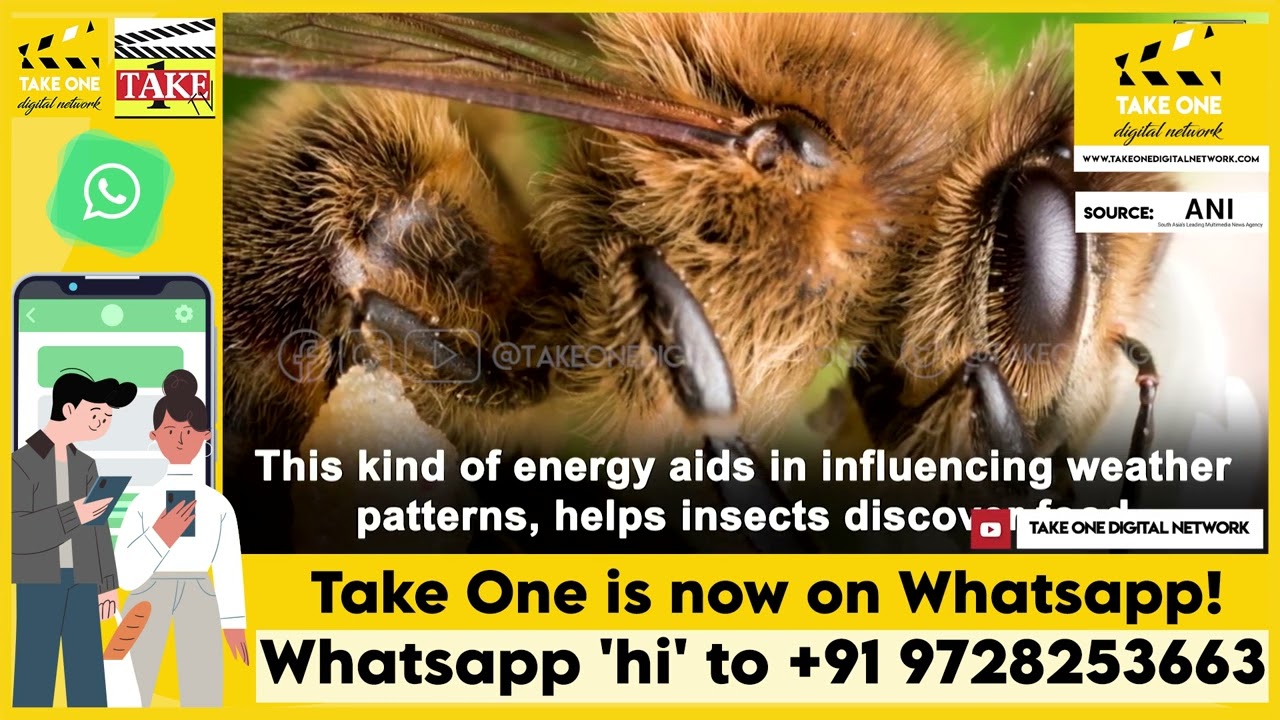Insects Contribute To Electric Field In Atmosphere As Thunderstorm Cloud, Study Finds
By measuring the electrical fields surrounding swarming honeybees, scientists have determined that insects contribute to electric field in atmosphere. This kind of energy is used by insects to locate food, by spiders to push themselves through the air, and by humans to influence weather patterns. The study's results, which were published in the journal iScience, show that organisms have an effect on the electrical properties of the air around them.
Author:Camilo WoodReviewer:Dexter CookeOct 25, 2022137 Shares137.3K Views

By measuring the electrical fields surrounding swarming honeybees, scientists have determined that insects contribute to electric field in atmosphere. This kind of energy is used by insects to locate food, by spiders to push themselves through the air, and by humans to influence weather patterns. The study's results, which were published in the journal iScience, show that organisms have an effect on the electrical properties of the air around them.
Bees, like all other organisms, have a natural electric charge. After finding that honeybee hive swarms change the electricity in the air by 100 to 1,000 volts per meter, which increases the electric field force normally seen at ground level, the researchers made a model that can predict how other kinds of insects will affect the electricity in the air.
Electric Charge In The Atmosphere
Multiple sources of electric charge in the atmosphere play an important role in regulating processes like the aggregation of droplets and the expulsion of dust and aerosols. The atmospheric electric field's erratic behavior provides proof of this.
The electrical fields around swarming honeybees have been measured, and the results show that the insects may create as much ambient electric charge as a thunderstorm cloud. Weather can be influenced, insects can find food, and spiders can fly large distances thanks to this kind of energy.
Scientists use a combination of theory and experiment to show that honeybee swarms add between 100 and 1,000 volts per meter to the atmosphere's electrical potential. The power of the electric field at ground level is thereby amplified.
By contrasting the electrical contributions of distinct swarming insect species with common abiotic sources of charge, the model could also quantify the effect of other insect species. This demonstrates that certain swarms of insects will provide a charge that is equivalent to that caused by weather changes.
“„We only recently discovered that biology and static electric fields are intimately linked and that there are many unsuspected links that can exist over different spatial scales, ranging from microbes in the soil and plant-pollinator interactions to insect swarms and perhaps the global electric circuit.- Ellard Hunting, a biologist at the University of Bristol in the UK and first author of the study

Study reveals how insects contribute to atmospheric electricity
Final Words
To a degree proportional to swarm density, the honeybee swarm provided direct input to atmospheric electricity. A team of researchers determined its usefulness by determining the electrical contribution of different kinds of swarming insects and comparing it to typical abiotic sources of charge, meaning those that are physical rather than biological.
This demonstrated that the electrical output of some swarms of insects may be equivalent to that of changes caused by weather. So, the observed charge transmission by insects reveals a hitherto undiscovered function of biogenic space charge for physical and biological processes in the atmosphere.
The phenomenon that insects contribute to electric field in atmosphere is likely also applicable to other species in the atmosphere that carry an electric charge, such as microorganisms and birds.

Camilo Wood
Author
Camilo Wood has over two decades of experience as a writer and journalist, specializing in finance and economics. With a degree in Economics and a background in financial research and analysis, Camilo brings a wealth of knowledge and expertise to his writing.
Throughout his career, Camilo has contributed to numerous publications, covering a wide range of topics such as global economic trends, investment strategies, and market analysis. His articles are recognized for their insightful analysis and clear explanations, making complex financial concepts accessible to readers.
Camilo's experience includes working in roles related to financial reporting, analysis, and commentary, allowing him to provide readers with accurate and trustworthy information. His dedication to journalistic integrity and commitment to delivering high-quality content make him a trusted voice in the fields of finance and journalism.

Dexter Cooke
Reviewer
Dexter Cooke is an economist, marketing strategist, and orthopedic surgeon with over 20 years of experience crafting compelling narratives that resonate worldwide.
He holds a Journalism degree from Columbia University, an Economics background from Yale University, and a medical degree with a postdoctoral fellowship in orthopedic medicine from the Medical University of South Carolina.
Dexter’s insights into media, economics, and marketing shine through his prolific contributions to respected publications and advisory roles for influential organizations.
As an orthopedic surgeon specializing in minimally invasive knee replacement surgery and laparoscopic procedures, Dexter prioritizes patient care above all.
Outside his professional pursuits, Dexter enjoys collecting vintage watches, studying ancient civilizations, learning about astronomy, and participating in charity runs.
Latest Articles
Popular Articles